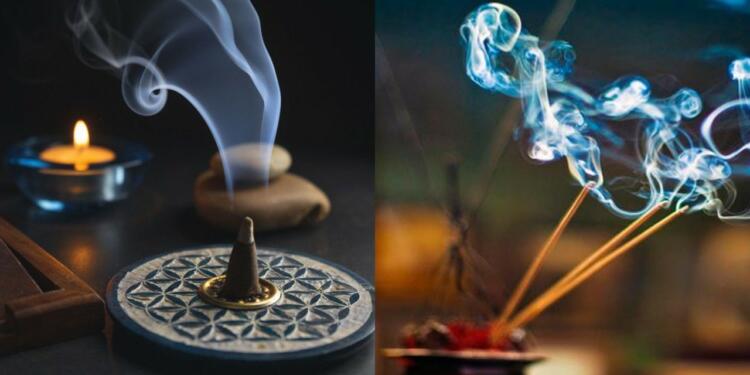Indian Agarbatti market: As the world stood still amidst the COVID Pandemic, our TV screens became a source of both solace and curiosity. Amidst the iconic Ramayan broadcasts, certain commercials caught our attention – that of the mystical Dhoop Battis. Their alluring presence left us pondering: How big could be a market for such traditional products? The answers that unfolded were nothing short of astonishing.
In a world where uncertainty loomed, the incense industry emerged as an unexpected hero. Surging forward with unwavering growth, it demonstrated a remarkable resilience, even in the face of a global crisis like COVID 19. Over the past two years, a period overshadowed by the pandemic’s grip, the industry has defied the odds with a staggering growth rate exceeding 10 percent, and a potential CAGR of 8.8 percent from 2023 to 2028!
This growth isn’t a mere statistic; it’s a testament to the timeless allure of age-old practices. But the story doesn’t end with just growth; it takes a more intriguing turn when you step into the fiercely competitive arena of the incense market. Companies, big and small, are vying for their aromatic products to dominate living spaces across the length and breadth of India! Let us explore how an ancient tradition not only weathered modern-day storms but also emerged stronger and more captivating than ever before.
The Fragrance Unfazed: Incense Sticks Thrive Through COVID
The market for incense sticks, which includes Agarbatti and Dhoop, has held a significant position, particularly in India, a nation renowned for its rich cultural heritage. This enduring tradition of using incense for various religious, spiritual, and aromatic purposes has contributed to the immense market size of these fragrant creations.
According to estimations provided by the Union Commerce and Industry Ministry, the exports of incense sticks are projected to witness a 15% increase by the conclusion of the fiscal year 2021. The incense stick industry has shown a consistent growth trajectory, which is anticipated to surge to a substantial compound annual growth rate of 8.8% starting from the year 2023 onwards.
The economic value of India’s agarbatti sector is noteworthy, approaching almost 1 billion USD, with exports alone accounting for more than 1,000 crore rupees. Despite facing competition from countries like China and Vietnam, India’s domestic market has been predominantly dominated by the production of high-quality indigenous products, underscoring the trust consumers place in them.
A glance at the data provided by the Union Ministry of Commerce reveals the scope of India’s incense stick exports. The nation exported incense sticks worth USD 498.02 million during the period spanning from 2012 to 2016. This export activity demonstrated consistent annual growth, escalating from USD 89.64 million in fiscal year 2012 to USD 100.02 million in fiscal year 2016. During fiscal year 2016, the United States emerged as the principal importer of Indian incense sticks, accounting for an import value of USD 11.3 million. This was followed by the United Arab Emirates (UAE) with an import value of USD 6.23 million and Nigeria with USD 5.85 million.
Also read: Why Homeopathy, a Glorified “Placebo Science”, defeated Time-Tested Ayurveda
In the financial year 2016-17, India’s incense stick exports were recorded at over Rs 400 crores, constituting about 10% of the global incense market. The unrelenting COVID-19 pandemic posed numerous challenges across various industries; however, the incense industry in India proved resilient. Remarkably, the industry experienced a consistent growth rate of over 10% during the two years of the pandemic.
Ankit Agarwal, the Director of Mysuru Deep Perfumery House [which operates the brand Zed Black], a prominent incense stick manufacturer, attests that the incense industry weathered the challenges posed by the pandemic quite well. According to him, incense sales can be divided into two distinct phases for the incense stick sector. The first phase, beginning in June 2020, witnessed a surge in demand and heightened sales attributed to the onset of the festive season. The second phase, post Diwali, followed a typical pattern of sales decline, unrelated to the pandemic.
Notably, even though factories faced temporary closures due to the nationwide lockdown imposed to contain the spread of COVID-19, production rebounded by August. The incense market is projected to achieve a valuation of Rs 7,500-8,000 crore by the end of 2021, signifying an increase from the current valuation of Rs 7,000 crore.
Leaders of the Scent: Pioneering the Incense Industry’s Tomorrow
The state of Karnataka, often referred to as the “Capital of Agarbattis” or incense sticks, stands as the prominent producer of agarbatti in India. With manufacturing hubs primarily located in Mysuru and Bangalore, this state commands a significant market share, contributing to more than 30 percent of the total agarbatti production in the country. Furthermore, while scented agarbattis find their main manufacturing centers in Mysuru and Bangalore, the unscented agarbatti market is largely dominated by Gaya, Bihar.
Mysuru, has earned recognition as a pioneer in the art of agarbatti manufacturing. This industry has evolved into one of the key cluster activities within the city. In the national context, the competition within the agarbatti market is characterized by its intensity. Among scented agarbattis, N. Ranga Rao & Sons hold a dominant position with their flagship product, Cycle Pure Agarbattis. On the other hand, the dhoop market, another segment of the incense industry, is primarily led by Hari Darshan, a formidable competitor in the broader agarbatti arena as well.
The trajectory of Hari Darshan is quite remarkable and bears resemblance to the story of MDH. Just as the owners of MDH persevered through the trials of Partition and laid the foundations of their business in the bustling alleys of Delhi, the creators of Hari Darshan similarly encountered and overcame substantial challenges, beginning with a humble shop in Sadar Bazar. Their journey, showcases their resilience and determination, and today, they stand as a strong contender in the agarbatti market, challenging the leadership of prominent brands like Cycle Agarbattis, MDPH (which operates Zed Black), and ITC (known for their Mangaldeep brand).
However, the incense industry hasn’t been without its share of obstacles. Given that most of the raw materials required for agarbatti production are sourced locally, the manufacturing process is relatively straightforward, resulting in low production costs. In the recent past, the industry faced allegations concerning a notable surge in imports from China and Vietnam. Responding to these concerns, the government of India implemented import restrictions on incense products in 2019. Prior to this regulatory intervention, the industry had primarily been importing unfinished raw incense, rather than finished products. Even when raw incense was imported, India added substantial value to the final product, approximately 85 percent.
Also read: Madhubani Painting – An enchanting tapestry of History, Mythology, and Culture
Dhoop’s Role in Crafting a Self-Sufficient Bharat
However, irrespective of the restrictions, the incense industry has gradually embraced the principles of “Aatmnirbhar Bharat” or self-reliance, with efforts directed towards reducing dependency on external sources and achieving greater self-sufficiency.
Through innovative strategies and resourceful approaches, the industry has navigated this period of change and disruption. Despite facing challenges like import restrictions, COVID 19 etc., the incense industry has showcased its resilience and adaptability, with a renewed focus on self-reliance. As the journey continues, the incense industry stands as a testament to the capacity of Indian businesses to navigate challenges and emerge stronger.
Support TFI:
Support us to strengthen the ‘Right’ ideology of cultural nationalism by purchasing the best quality garments from TFI-STORE.COM

































